VERSION EN ESPAÑOL
&&&&&&&&&&&&&&&&&&&&&
Hola a todos por acá. Que bueno volver a encontrarnos.
En mi trayectoria artística, en el mundo maravilloso de las artes plásticas, desde el principio traté de incursionar en diferentes géneros y técnicas y así hoy mi universo creativo cuenta con un abierto patrimonio que abarca la pintura, el dibujo, la escultura. La fotografía, la experimentación
gráfica, la instalación, etc.
Cada uno de estos géneros y subgéneros con sus múltiples posibilidades de expresión y diversos recursos técnicos.
Así he incursionado en géneros como el paisaje, tanto urbano como rural, y alguna que otra marina. El bodegón, la naturaleza muerta y el retrato.
Pero en el fondo de todo esto siempre emergió en mí una visión surrealista de la realidad, tendencia que me propicia, el poder en un solo espacio discursivo introducir abierta y deliberadamente a la mayoría de los géneros referidos.
Es por eso que la producción independiente de paisajes, y retratos, por ejemplo, no son muy abundantes, aunque tampoco tan escasos.
Y precisamente es el retrato en su autonomía la menos recurrente dentro de mis creaciones, aunque últimamente he complacido satisfactoriamente a varias clientes, pero igualmente han sido retratos de escenas acompañadas de animales, en torno de recuerdos o simplemente con paisaje de fondo.
Pero hoy les traigo el proceso de un retrato sin más discurso que el propio retratado.
En este caso es un encargo del museo municipal de mi municipio San Luis Pinar de Río.
Esta institución, en poco, cambia su nombre por el de “Julio Cesar Valdés Solanes(Chiquitico) quien entre otras cosas valiosas fue el director fundador de esa institución conservadora de la historia y las tradiciones del municipio.
Este encargo supone uno de los momentos más importantes de mi vida artística. Quizá el cierre de un amplio ciclo desde que entré, allá por el año mil novecientos setenta y cinco, en el movimiento de artistas aficionados de la localidad, hasta el presente de mi vida profesional.
No es un retrato alegórico, ni tampoco de un mártir o un prócer de la historia, si no un personaje cuya vitalidad aún está latente en las paredes de esa institución, en la calle y en el recuerdo fresco de la familia, pues hace apenas un año que partió al plano sutil de la existencia.
Por otro lado, compartimos él y yo muchas experiencias de trabajo e intercambios en el plano filosófico y por qué no, en cuestiones esotéricas de dónde supe de su hermética práctica de preceptos budistas.
Esta obra de 55 cm x 40 cm está realizado sobre lienzo imprimado con la tradicional técnica del óleo.
Dentro de todos los referentes que me aportaron para realizar el retrato a tamaño natural, tuve mucho interés en seleccionar aquella que me mostrará el perfil sicológico del retratado con el que yo estaba identificado, por las propias experiencias de los intercambios conversacionales y las largas y pausadas caminatas por la amplia avenida o paseo de nuestro querido poblado.
Así encontré esta pose, dónde descubro al pensador inmerso en el vacío que es el campo de todas las posibilidades. La mirada fija quizás en un pensamiento mientras el misterio eterno de la luz le modela el rostro dividido por el efecto de elevado constrate, en definidos aunque no cortantes bloques de luz y sombra, contra un fondo negro sin referencia geográfica. Solo él y su mundo de Yin y Yan hecha pintura.
En el proceso muestro el largo camino recorrido desde el montaje del lienzo en el batidor, pasando por la primera etapa del dibujo a lápiz, el entintado de la obra trabajando las áreas de luz y sombras, en pequeños bloques, utilizando los colores sombras como los sienas, algo de negro y blancos tocados con muy poco pigmento de amarillo para lograr más luminosidad acompañando la mezcla con color piel
del rostro, en las áreas más iluminadas.
Chiquitico tiene un perfil medio romano con lo que hace justicia a su nombre” Julio César"". Con el que le noto algún parecido físico visual por asociación libre. Según fui aplicado el color más local en busca de las definiciones y los detalles tuve que hacer algunas correcciones de dibujo, pues es sabido que el color modifica algunas proporciones aumentando o disminuyendo ópticamente las áreas y los detalles.
Eso es parte del oficio y más cuando se emprende esta tarea con el método directo. Es decir, sin utilizar ningún artificio técnico ni tecnológico, como las cuadrículas o la proyección de imagen desde un soporte tecnológico. Aquí fue a pura vista y con la conexión ojo, mente y mano. Siempre he preferido el defecto humano a la perfección técnica.(Es mi preferencia y Cada cual resuelve a su manera).
En este retrato el gran reto técnico para mí está en lograr la transición de luz y sombra en el rostro sin que afectará el color local y para esto después de ubicar el siena tostado para el bloque de sombra fui introduciendo capas de color carne logrado con la mezcla de rojo bermellón amarillo cadmio y blanco titanio. Y después una sutil veladura de siena claro. Así hasta lograr el efecto de la carne y los detalles bajo la sombra.
Esa zona de penumbra apoya la conceptualización que tengo de Julio Cesar, de un ser un poco Socrateano o Aristotelesco; en fin, un pensador conectado con el mundo Grecorromano.
Para lograr el negro profundo y uniforme del fondo del retrato, utilice pintura acrílica mate. Para evitar después reflejos que distraen al observado.
Más adentrado el trabajo, me concentré especialmente en el ojo izquierdo, que es el que muestra en la pose de perfil. Aquí trabajé en base a la experiencia y la afinidad que tenía con el retratado,: su mirada escrutadora en el fondo de la historia y el patrimonio, y una especie de picaresca en la comisura de los labios que la longevidad no le pudo borrar, y ni siquiera la muerte.
La luz la fui tratando con leves toques rosas y amarillo limón, pero en proporciones muy limitadas.
Ya después de todo el trabajo magno de las grandes zonas, los detalles que parecen muy reales son breves insinuaciones efectistas de color piel. .
En el tratado de la camisa no quise ser demasiado detallista para no restarle tensión e interés al protagonismo de la cabeza con todos los elementos expresivos. Pues allí está la esencia. Y no en los accesorios y otros adornos.
Hoy por fin fue develado públicamente este retrato, el cual ya forma parte de la colección permanente del museo, el cual lleva su nombre en honor a toda la labor que en vida realizó por esta institución.
Este trabajo ha sido una gran experiencia, pues es también un elevado compromiso social, y conmigo mismo. Ya que considero que cierra un amplio ciclo en mi labor creativa
Gracias por llegar hasta aquí.
Texto traducido con Deelpp traductor.
Fotos tomadas con mi Redmi9a.
🖌️🖌️🖌️🖌️🖌️🖌️🖌️🖌️🖌️🖌️🖌️🖌️🖌️
PROCESO CREATIVO
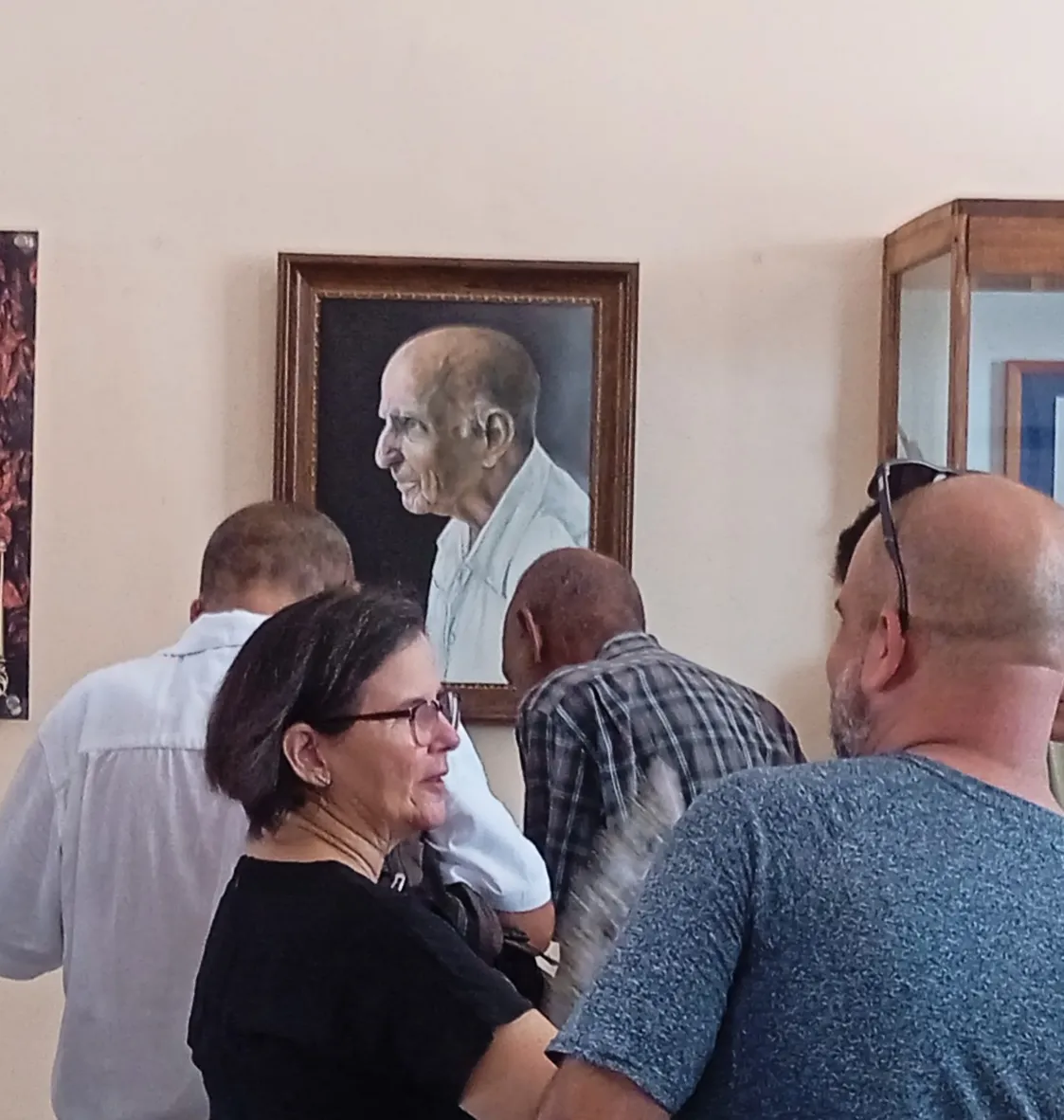
🖌️🖌️🖌️🖌️🖌️🖌️🖌️🖌️🖌️🖌️🖌️🖌️

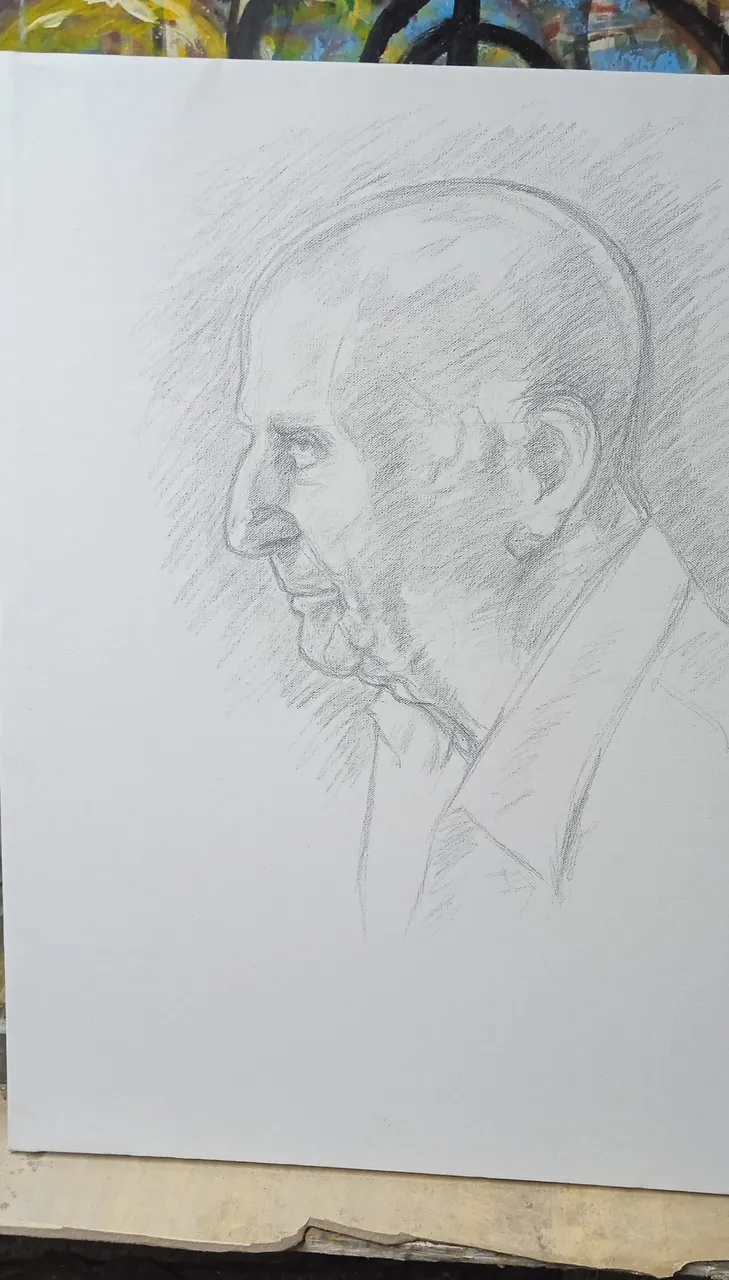

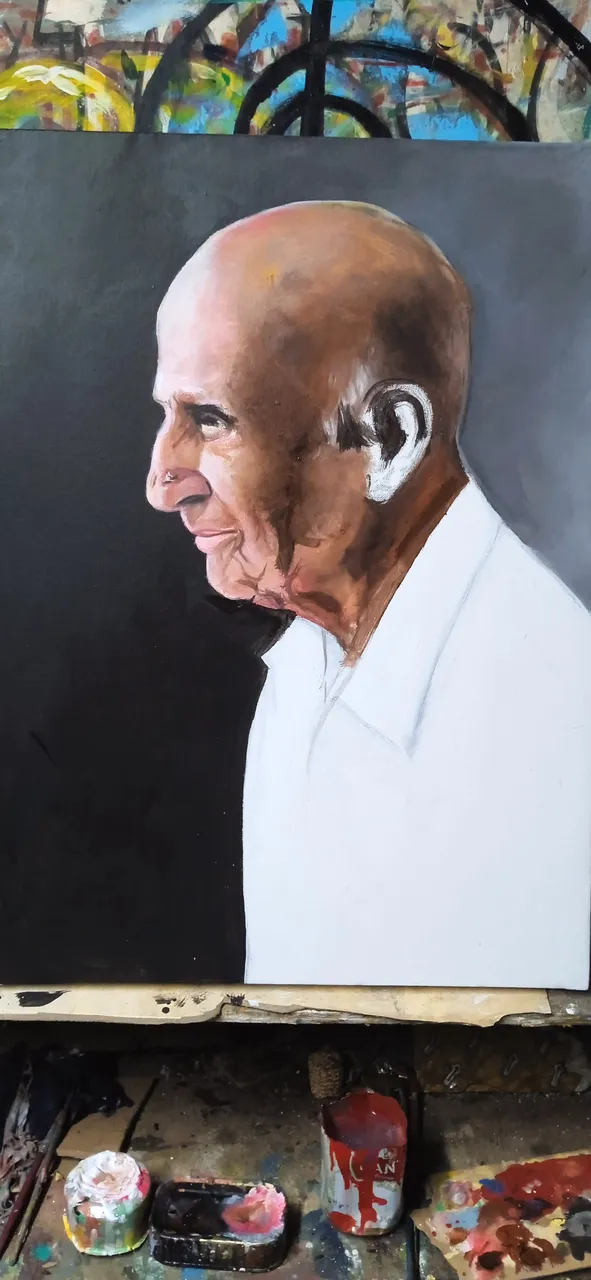


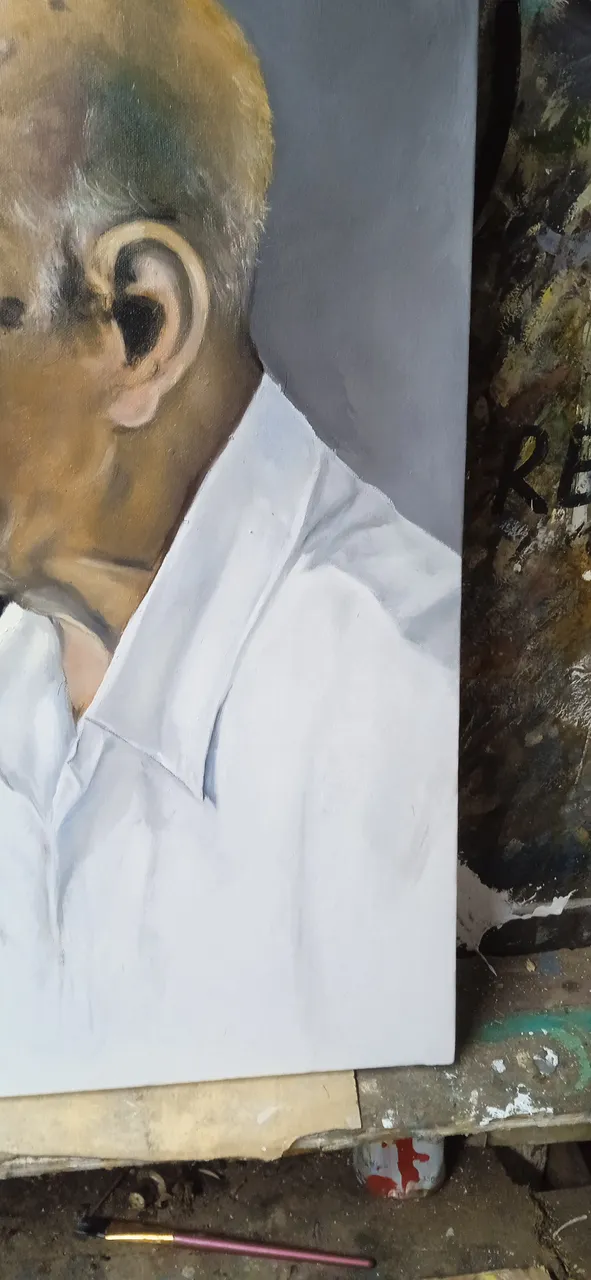


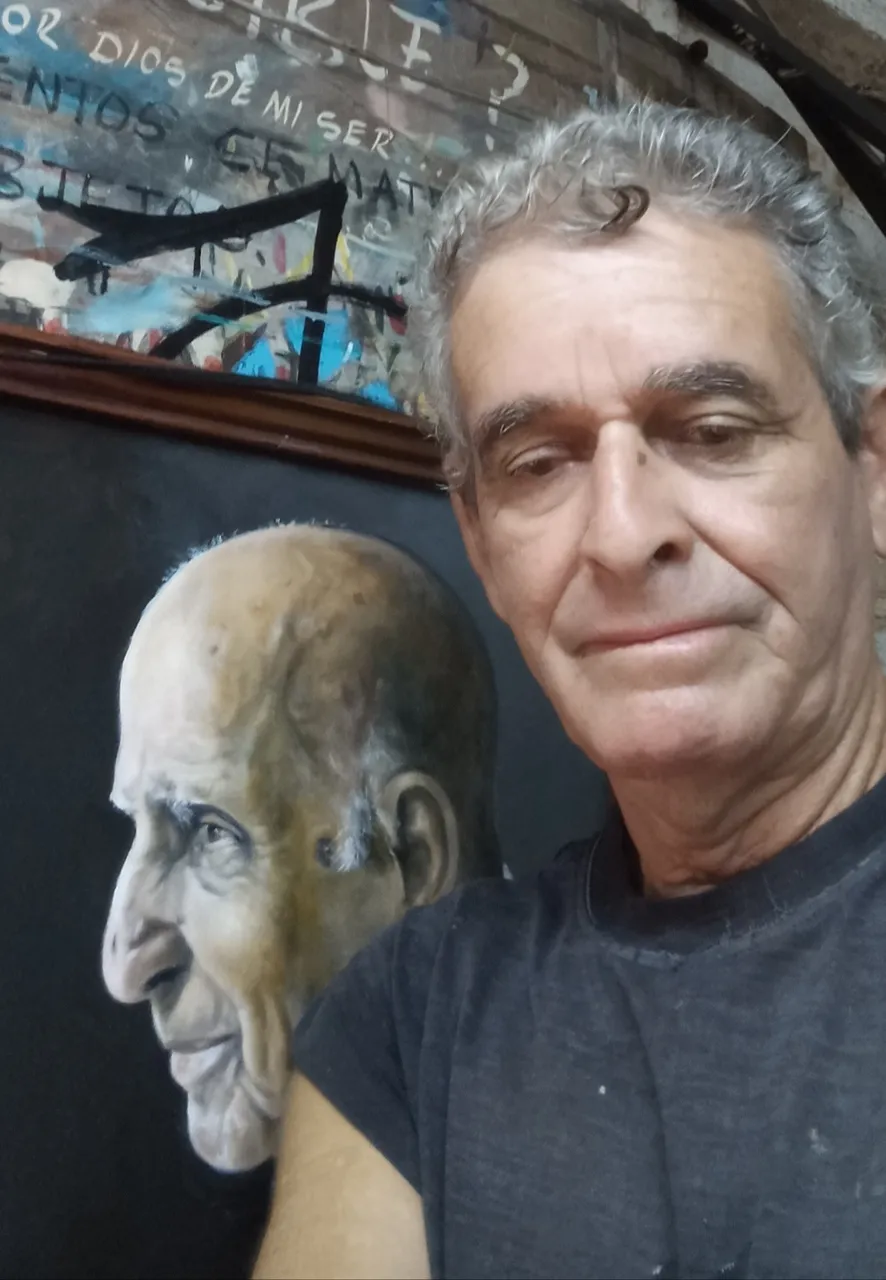
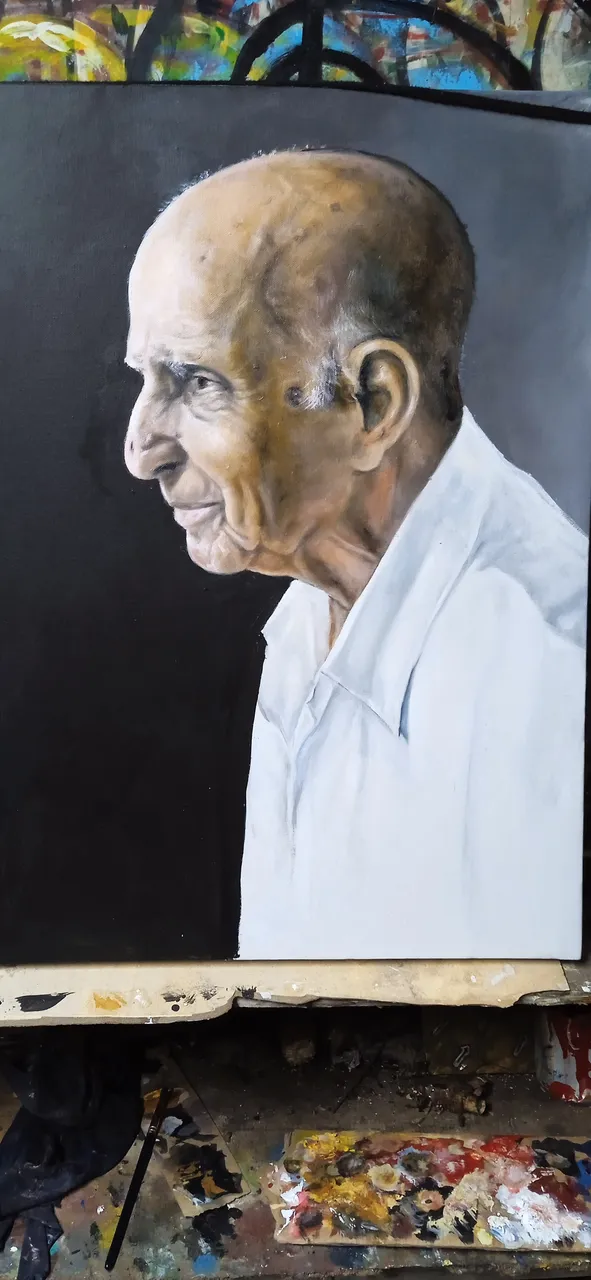

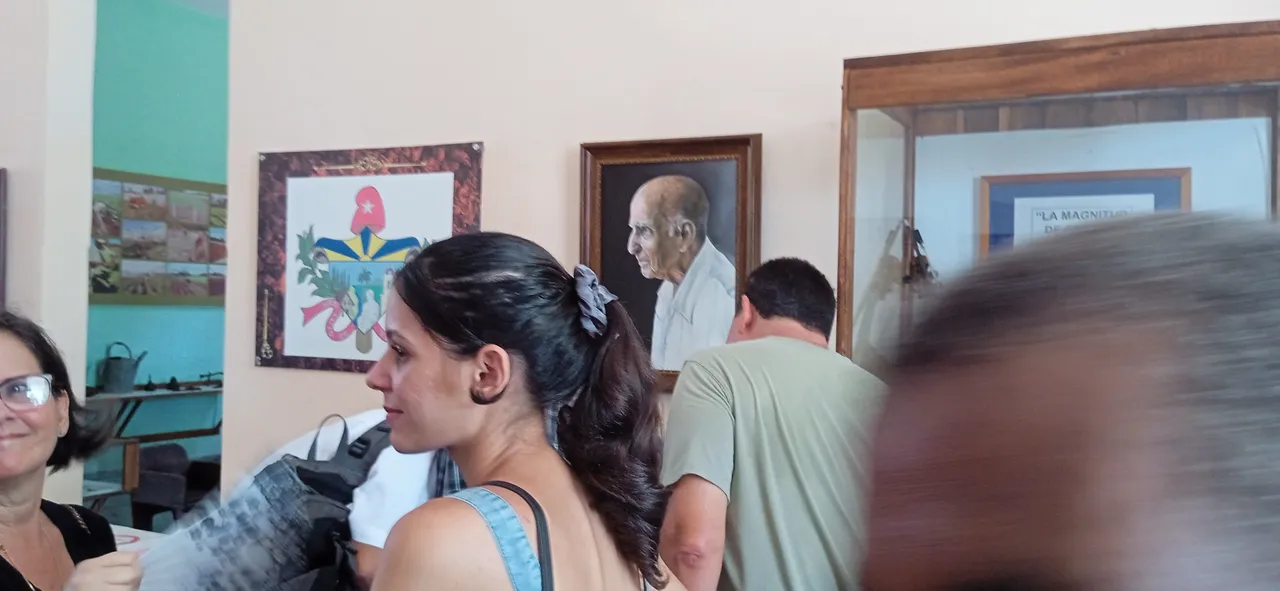

VERSION IN ENGLISH.
&&&&&&&&&&&&&&&&&&&&&&&&
Hello to everyone here. It's good to meet again.
In my artistic career, in the wonderful world of the plastic arts, from the beginning I tried to venture into different genres and techniques and so today my creative universe has an open heritage that includes painting, drawing, sculpture. Photography, graphic experimentation
experimentation, installation, etc.
Each of these genres and sub-genres with their multiple possibilities of expression and diverse technical resources.
Thus I have ventured into genres such as landscape, both urban and rural, and the occasional marine. Still life, still life and portraiture.
But in the background of all this, a surrealist vision of reality has always emerged in me, a tendency that allows me to openly and deliberately introduce in a single discursive space most of the referred genres.
That is why the independent production of landscapes and portraits, for example, are not very abundant, although they are not so scarce either.
And it is precisely the portrait in its autonomy the least recurrent within my creations, although lately I have pleased several clients satisfactorily, but they have also been portraits of scenes accompanied by animals, around memories or simply with landscape in the background.
But today I bring you the process of a portrait with no more discourse than the portrait subject himself.
In this case it is a commission from the municipal museum of my municipality San Luis Pinar de Río.
This institution soon changed its name to "Julio Cesar Valdes Solanes (Chiquitico) who, among other valuable things, was the founding director of this institution, which preserves the history and traditions of the municipality.
This commission is one of the most important moments in my artistic life. It is perhaps the end of a long cycle since I joined the local amateur artists' movement back in 1975, up to the present day of my professional life.
It is not an allegorical portrait, nor of a martyr or a hero of history, but of a character whose vitality is still latent in the walls of that institution, in the street and in the fresh memory of the family, since it was only a year ago that he left for the subtle plane of existence.
On the other hand, he and I shared many experiences of work and exchanges on a philosophical level and, why not, in esoteric matters, from where I learned of his hermetic practice of Buddhist precepts.
This work of 55 cm x 40 cm is made on canvas printed with the traditional technique of oil painting.
Among all the references that I was given to make the life-size portrait, I was very interested in selecting the one that would show me the psychological profile of the portrayed person with whom I was identified, due to my own experiences of the conversational exchanges and the long and leisurely walks along the wide avenue or promenade of our beloved village.
Thus I found this pose, where I discover the thinker immersed in the emptiness that is the field of all possibilities. His gaze fixed perhaps on a thought while the eternal mystery of the light shapes his face divided by the effect of the high constrate, in defined but not sharp blocks of light and shadow, against a black background with no geographical reference. Just him and his world of Yin and Yan made painting.
In the process I show the long way from the mounting of the canvas on the beater, passing through the first stage of the pencil drawing, the inking of the work working the areas of light and shadow, in small blocks, using the shadow colours such as the sienna, some black and white touched with very little yellow pigment to achieve more luminosity accompanying the mixture with the skin colour of the face, in the most illuminated areas of the face, in the most illuminated areas of the canvas.
of the face, in the most illuminated areas.
Chiquitico has a half-Roman profile which does justice to his name "Julius Caesar". With which I notice some visual physical resemblance by free association. As I applied the colour more locally in search of definitions and details I had to make some drawing corrections, as it is known that colour modifies some proportions by optically increasing or decreasing areas and details.
This is part of the craft and even more so when this task is undertaken using the direct method. That is to say, without using any technical or technological artifice, such as grids or the projection of images from a technological support. Here it was purely by sight and with the eye, mind and hand connection. I have always preferred the human flaw to technical perfection (it is my preference and each one resolves it in his own way).
In this portrait the great technical challenge for me is to achieve the transition of light and shadow on the face without affecting the local colour and for this after placing the toasted sienna for the shadow block I introduced layers of flesh colour achieved with the mixture of cadmium yellow vermilion red and titanium white. And then a subtle glaze of light sienna. I did this until I achieved the effect of the flesh and the details under the shadow.
This zone of penumbra supports the conceptualisation I have of Julius Caesar, of a being a little Socratean or Aristotelian; in short, a thinker connected with the Greco-Roman world.
To achieve the deep, uniform black of the portrait background, use matt acrylic paint. To avoid distracting reflections afterwards.
Further into the work, I concentrated especially on the left eye, which is the one shown in the profile pose. Here I worked on the basis of the experience and affinity I had with the sitter: his scrutinising gaze on the background of history and heritage, and a kind of mischievousness at the corners of his lips that longevity could not erase, not even death.
I treated the light with light touches of pink and lemon yellow, but in very limited proportions.
Already after all the great work on the large areas, the details that seem very real are brief, effective hints of skin colour.
In the treatise on the shirt I didn't want to be too detailed so as not to detract from the tension and interest of the head with all the expressive elements. For that is where the essence lies. And not in the accessories and other ornaments.
Today this portrait was finally unveiled in public and is now part of the permanent collection of the museum, which bears his name in honour of all the work he did for this institution during his lifetime.
This work has been a great experience, as it is also a high social commitment, and to myself. Since I consider that it closes a wide cycle in my creative work.
Thank you for coming this far.
Text translated with Deelpp translator.
Photos taken with my Redmi9a.
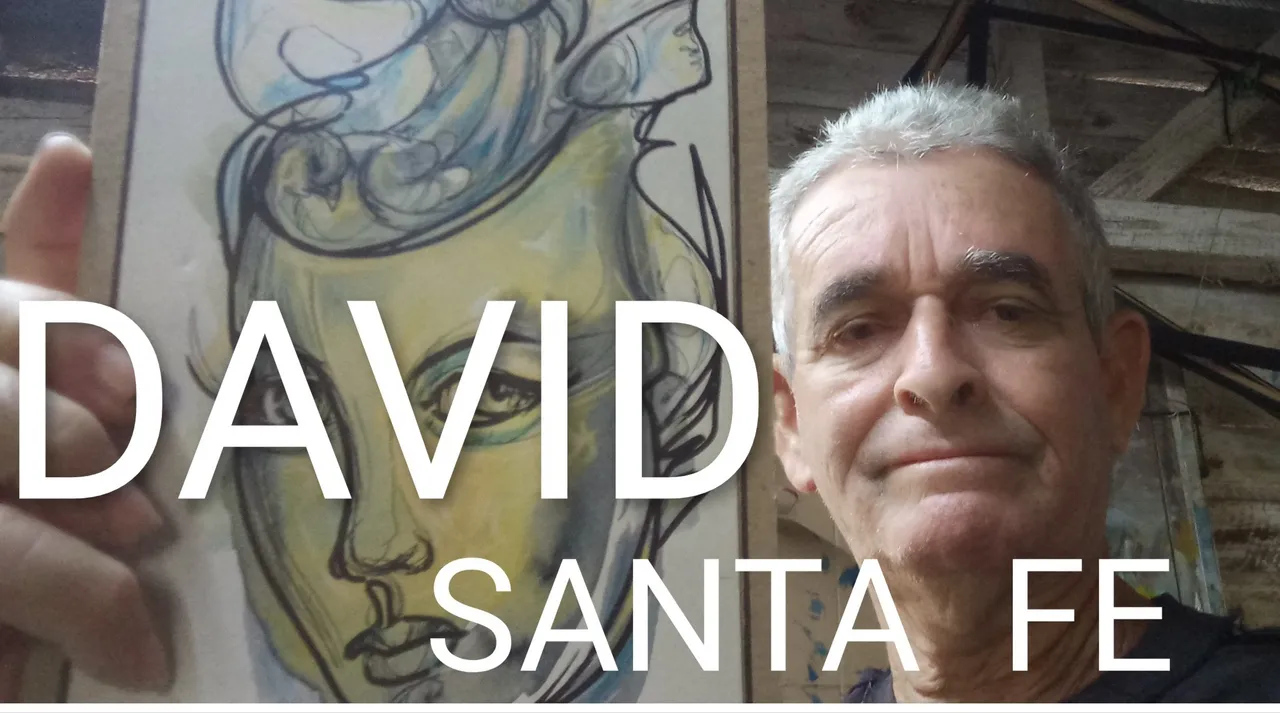
🖌️🖌️🖌️🖌️🖌️🖌️🖌️🖌️🖌️🖌️🖌️🖌️🖌️